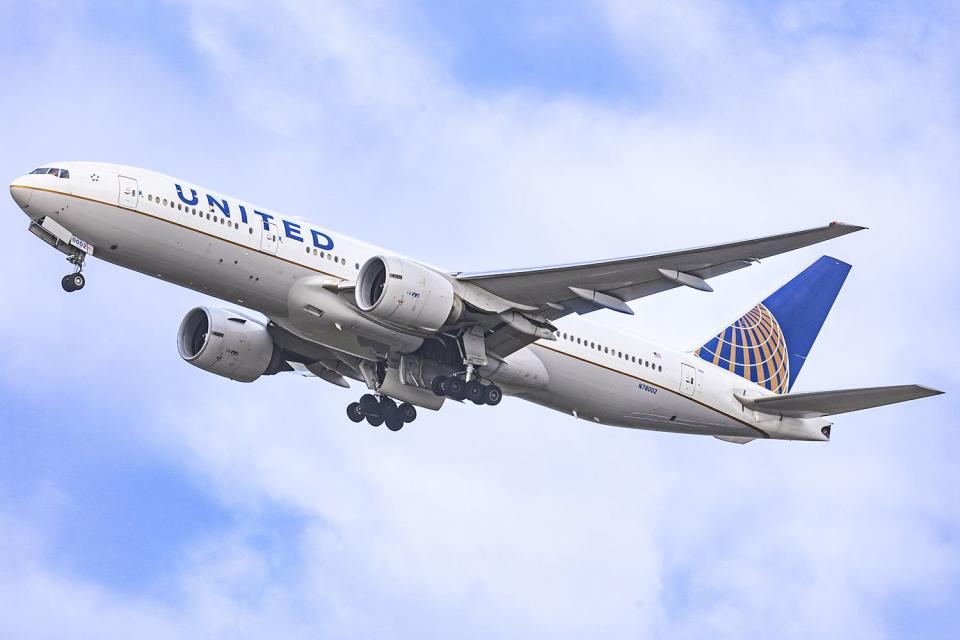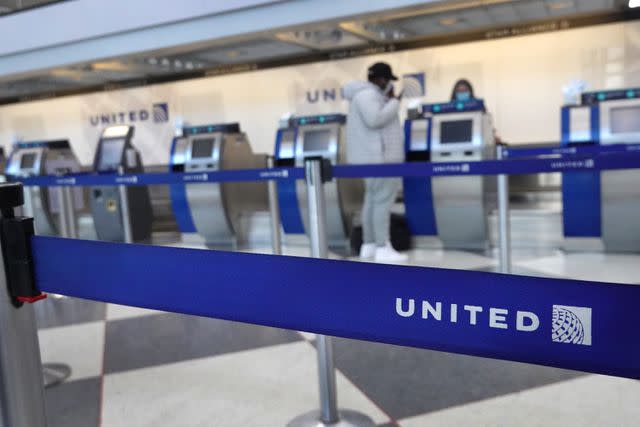United Airlines Flight's Nose Dive That Came Within 800 Ft. of Pacific Ocean Was Due to Pilot Error: Officials
The National Transportation Safety Board report recounts the plane's ground proximity warning system blaring as the first officer told the captain “pull up, pull up”

On Thursday, the National Transportation Safety Board revealed their findings after an investigation into why a Dec. 2022 United Airlines flight out of Hawaii plunged over 1,000 feet, and came within 800 feet of the Pacific Ocean.
The report found that the Boeing 777 made the dramatic drop due to human error, specifically, “the flight crew’s failure to manage the vertical flightpath, airspeed, and pitch altitude.” The NTSB report concluded that the incident occurred because of a “miscommunication” between the two pilots about the “captain’s desired flap setting” during takeoff.
Approximately one minute after United flight 1722 took off in heavy rain, the aircraft went from 2,100 feet to about 748 feet above the water, according to the report.
Utilizing flight crew statements, the NTSB report detailed the confusion in the cockpit that led up to the scary incident.
Related: Airlines Send Empty Planes to Hawaii, Add Flights to Evacuate Thousands of Tourists Amid Wildfires
To get lift, the plane’s wing flaps are set to a certain angle during takeoff, in this case 20 degrees, and incrementally retracted once in the air. The report details the captain hand-flying the initial moments of take off before the dramatic moment.
“When the airplane reached the acceleration altitude, the captain reduced the pitch attitude slightly and called for the flap setting to be reduced to flaps 5,” the report reads. “According to the first officer, he thought that he heard the captain announce flaps 15.”
As the nose of the airplane began to fall, the chaos in the cockpit began to rise. The first officer tells the NTSB that he “knew the captain was having difficulty with airspeed control” as the two were trying to manage the situation.
Soon after, the plane’s GPWS, or ground proximity warning system, started blaring initial warnings as the first officer recalled telling the captain “pull up, pull up.”

Never miss a story — sign up for PEOPLE's free daily newsletter to stay up-to-date on the best of what PEOPLE has to offer, from celebrity news to compelling human interest stories.
The two pilots were able to pull the plane out of the nose dive around 748 feet above the ocean, avoiding any injuries, at which point the captain was able to engage the autopilot for an otherwise smooth flight to San Francisco.
According to the NTSB report, “United Airlines modified one of their operations training modules and issued an awareness campaign about flight path management at their training center” in response to this incident.
“There’s nothing more important than the safety of our crew and customers, which is why we’re drawing on the lessons learned from this flight to inform the training of all United pilots,” United tells PEOPLE in a statement. “Our pilots voluntarily reported this safety incident and United fully cooperated with the independent investigation so that insights could be used to enhance the safety of the entire industry.”

Mia Shimabuku/Bloomberg via Getty Images
The incident was first reported on nearly two months after it occurred, in February 2023, by aviation blog The Air Current. The event lasted less than one minute, according to flight tracking data, the blog stated.
"After landing at SFO, the pilots filed the appropriate safety report," United spokesman Josh Freed told PEOPLE at the time. "United then closely coordinated with the FAA and ALPA (Air Line Pilots Association) on an investigation that ultimately resulted in the pilots receiving additional training."
The pilots of the plane had about 25,000 combined hours of flying time, Freed said.
Passenger Rod Williams II, who was traveling with his wife and two young children, recounted the terrifying moments to CNN.

"It felt like you were climbing to the top of a roller coaster. It was at that point," Williams said about the initial climb out of Kahului, before the plane suddenly dropped. "There were a number of screams on the plane. Everybody knew that something was out of the ordinary, or at least that this was not normal."
He added, "When the plane started to nosedive, multiple screams are being let out, at that point. You're trying your best to maintain your composure – there's obviously kids on the flight — nobody really knows what's going on, but at the same time, you're concerned. You don't know if this is an issue, but it was certainly out of the ordinary."
About 10 minutes after the nosedive, Williams said a crew member made an announcement.
"Someone from the cockpit got on the intercom and said, 'Alright, folks, you probably felt a couple G's on that one, but everything's gonna be okay. We're gonna be alright,' " Williams said.
For more People news, make sure to sign up for our newsletter!
Read the original article on People.

